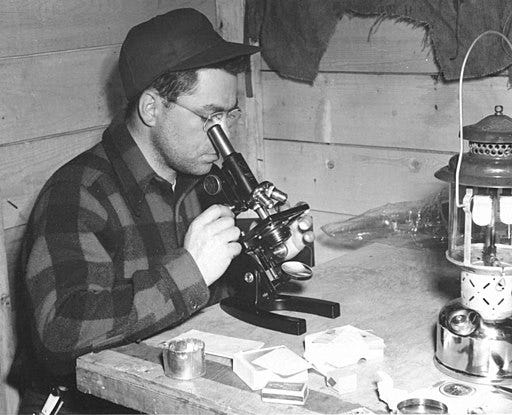
Even with a microscope, you can’t see an infinitesimal. Photo by Robert D. Jones Junior, U.S. Fish and Wildlife Service/public domain
Think of the smallest possible thing. Then divide it in two. Divide those halves in two. Keep going. Forever.
Those are infinitesimals: values too small to be measured. They’re very close to, but not quite, zero.
The word came from the 17th-century Latin coinage “infinitesimus,” which was intended to refer to an ordinal number (ordinals being one, two, three, etc.). It designated the “infiniteth” number in a series — the number that is at an infinite distance from the first number in the series.
Later, in the early 1800s, infinitesimal numbers played a major role in the development of calculus. Yay for them.
Please forgive The Artisanal Grammarian. He understands that higher mathematics is valuable and that a great many people find it fascinating, but it’s something that, like fishing, sparks in him only the most infinitesimal bit interest.
In common usage, as The Artisanal Grammarian has just demonstrated, “infinitesimal” has become an adjective meaning “too small to be measured” — or, more loosely, “really, really small.”


